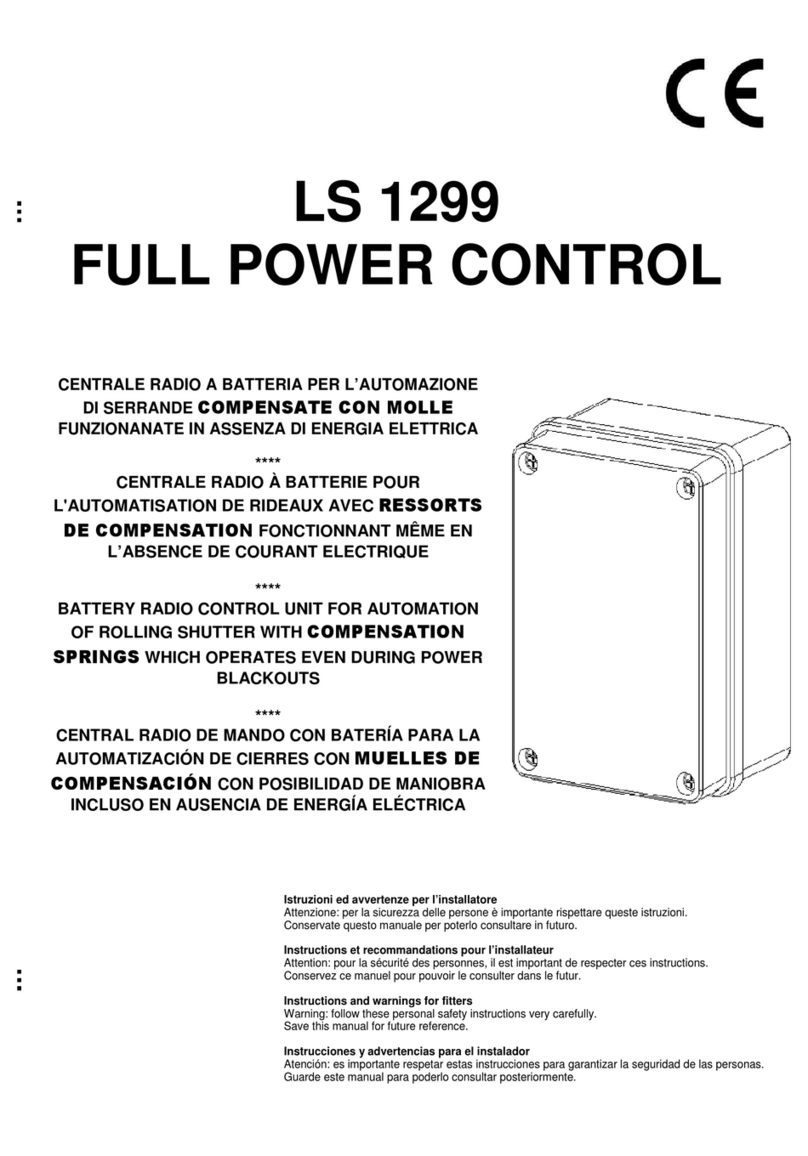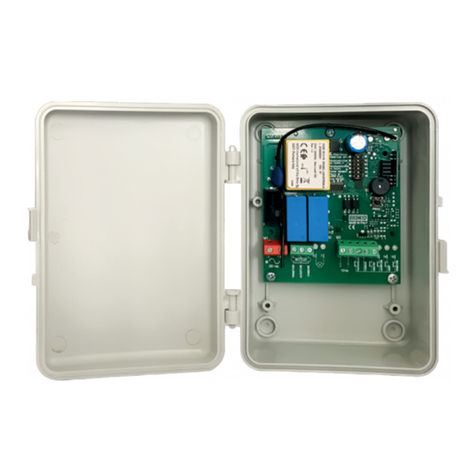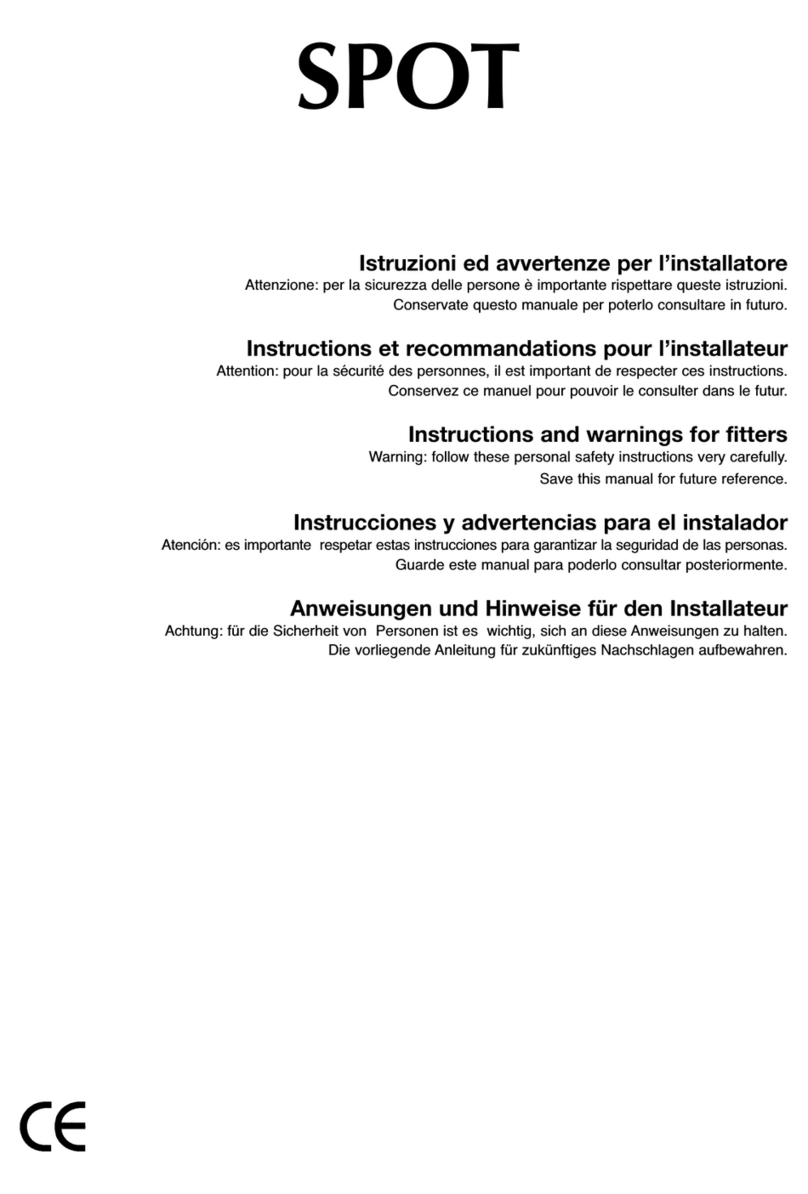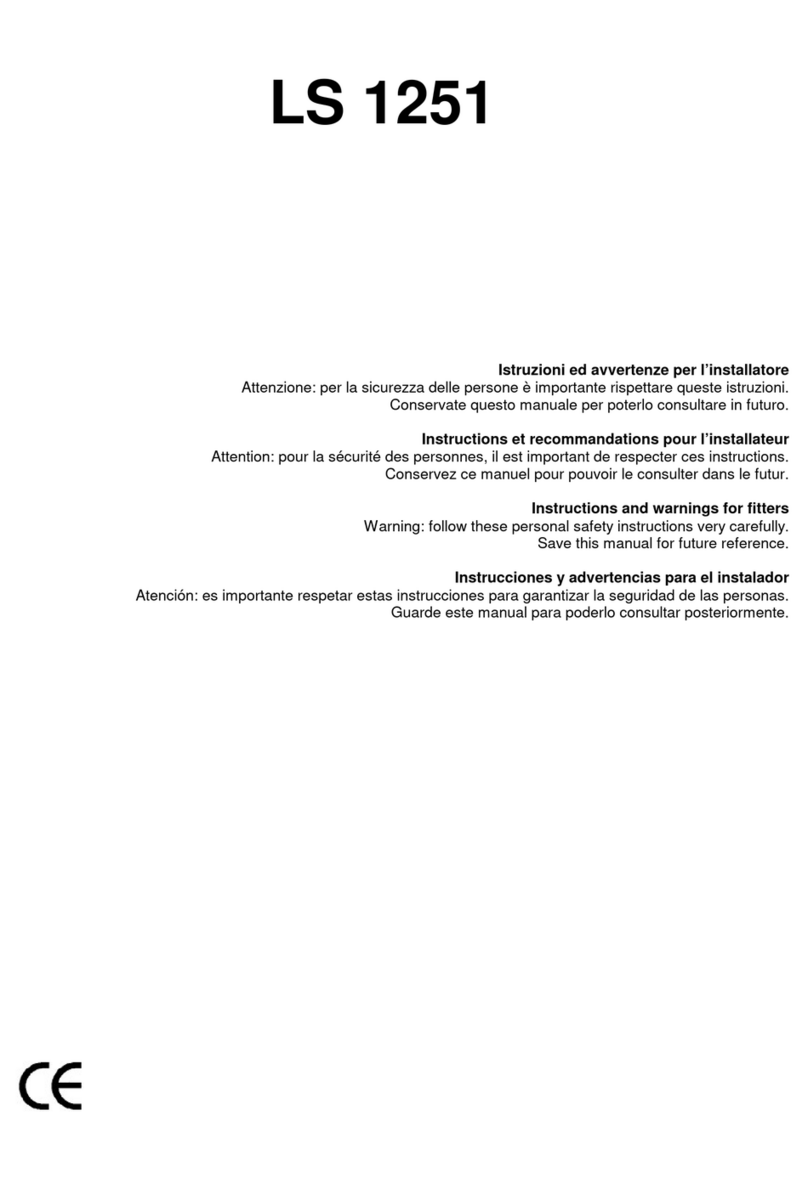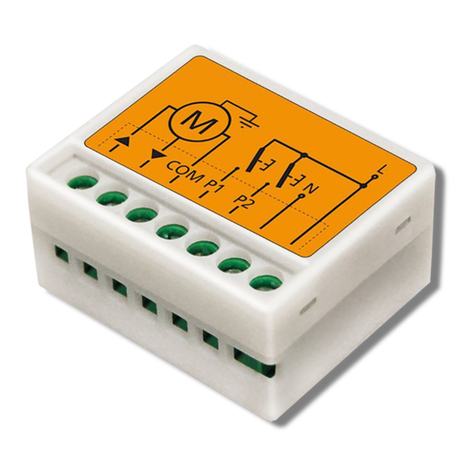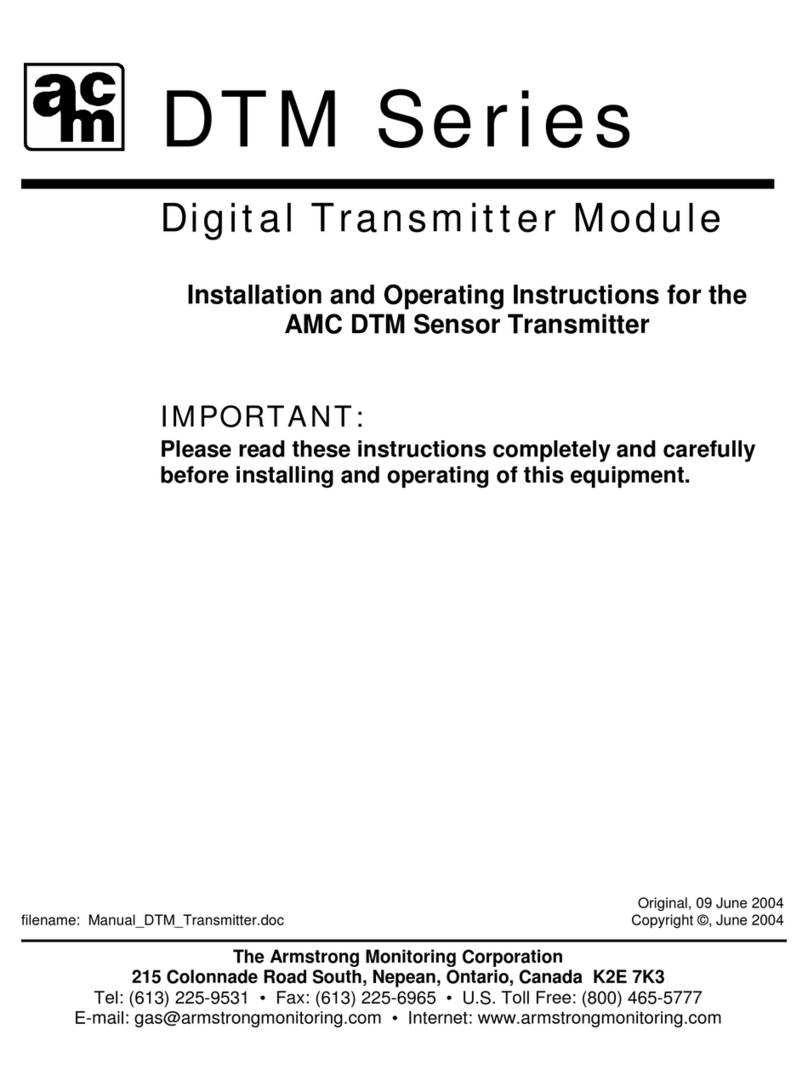
6. ANNULATION DES CODES DES RADIOCOMMANDES (« MÈRE » incluse)
On pourrait avoir besoin d’annuler tous les codes des radiocommandes mémorisées, inclus celui de « MÈRE »
(en cas de perte); dans ce cas, presser et tenir pressé le bouton extérieur (en position d’arrêt) jusqu’à ce que la
centrale signale l’effective annulation des codes, par trois cycles consécutifs brefs de « OUVERTURE » et «
FERMETURE » du store (ou volet roulant).
En l’absence de bouton poussoir externe, cette procédure peut être exécutée en simulant l’actionnement du
bouton (commande à basse tension voir fig. 1 page 2).
Nous vous rappelons que dans la phase successive de mémorisation de nouveaux codes, la première
radiocommande mémorisée sera codifiée et reconnue par la centrale comme la nouvelle « MÈRE ».
Pour mémoriser la nouvelle radiocommande mère, suivre la procédure indiquée au paragraphe 2.
7. INSTALLATION DE L’ANEMOMETRE WINDY
Un éventuel excès de vent peut endommager la structure portante du store et le store lui-même. Pour remédier à
ce problème, la centrale « LS 1292 » est prédisposée à l’installation d’un anémomètre.
L’anémomètre doit être installé près du store, bien exposé au vent, et connecté aux câbles de couleurs Rouge et
blanc, pour les montages électriques voir fig. 1 page 2.
SW2: Le seuil d’intervention de l’anémomètre peut être positionné sur deux vitesses : 15 km/h ou 30 km/h ;
installé grâce à une bretelle (jumper) à appliquer à l’intérieur de la centrale, voir fig.1.
N.B. L’INTERVENTION DE L’ANEMOMETRE CAUSE L’INHIBITION DU FONCTIONNEMENT DE LA
RADIOCOMMANDE ET DU BOUTON EXTERIEUR PENDANT 8 MINUTES ENVIRON.
AU COURS D'UNE ALARME VENT, LA LED "WIND" clignote, reste allumée pendant toute la période d’alarme,
durant le fonctionnement normal, la LED "VENT" clignote à chaque tour de l'anémomètre.
8. INVERSION DU SENS DE ROULEMENT
On pourrait avoir besoin d’inverser le sens de roulement de façon à ce que le bouton UP provoque effectivement
l’ouverture. Pour inverser le sens de rotation, presser et tenir pressés les deux boutons du radioguidage « MÈRE
», la centrale signale l’entrée en programmation par deux mouvements brefs du store (ou volet roulant), un
d’ouverture et l’autre de fermeture; presser alors le bouton extérieur. L’effective inversion est signalée par la
centrale par deux mouvements brefs de « OUVERTURE » et deux de « FERMETURE » du store (ou volet
roulant).
LE CONSTRUCTEUR DECLARE QUE LS 1292 EST CONFORME A LA DIRECTIVE 99/05 ET QUE LES
NORMES REPORTEES DANS LE TABLEAU ONT ETE APPLIQUEES:
ENGLISH
ATTENTION
Read the instructions carefully before starting to install and programme the control unit. Follow
the instructions scrupulously. Incorrect installation may create serious risks. The manufacturer
declines all liability in the event of incorrect installation or improper use of the product.
WARNINGS FOR INSTALLATION
• The LS 1292 central control unit must be installed only by qualified personnel and used only to
operate tubular motor-reducers for sun or window roller blinds. •The installer must provide for protection
of the device by means of a differential magnetothermic breaker (with at least 3 mm distance between the
contacts) that ensures separation of all poles from the mains in the event of a fault.
• In the event of a fault, the wiring supplied with the device must be replaced by the manufacturer or by qualified
personnel.
Sécurité électrique Compatibilité électromagnétique Emploi efficace du spectre













